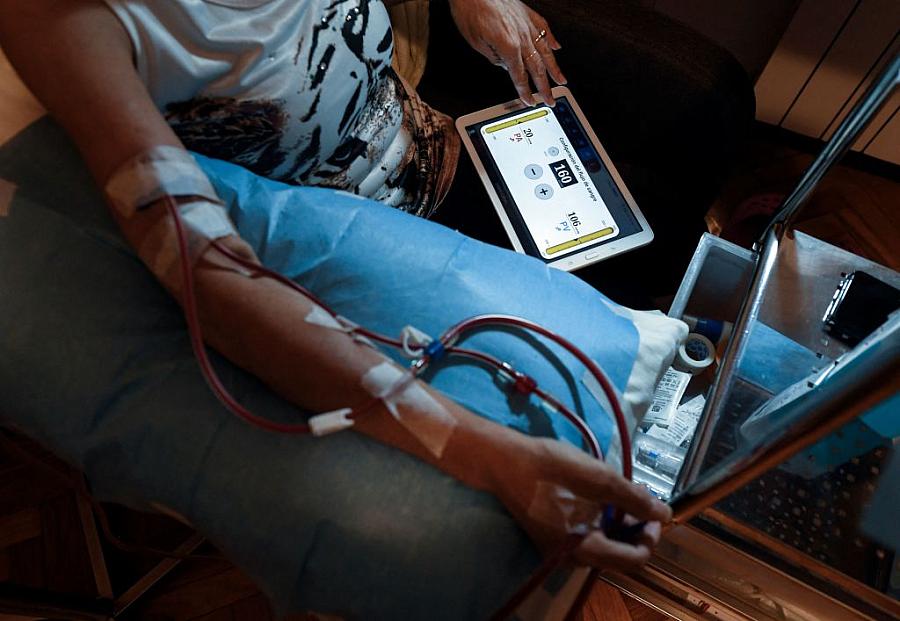Why is the involuntary discharge of dialysis patients such a well-guarded secret?

Photo by Oscar del Poz/AFP via Getty Images
Dialysis is a form of life support. For the estimated 800,000 Americans in kidney failure, thrice-weekly dialysis treatments keep them alive. Missing even a single treatment can be deadly.
Nearly all individuals with kidney failure (also known as end stage renal disease, or ESRD) qualify for Medicare. With the high costs and high stakes of dialysis treatments, the Centers for Medicare and Medicaid Services (CMS) collect volumes of data on dialysis patients and the clinics who provide their care. Much of that data is published through the U.S. Renal Data Service (USRDS), which is a treasure trove of information containing almost everything you could want to know about dialysis in America.
That’s why, when I started investigating a phenomenon called involuntary discharge, I assumed the USRDS would have data on how common it was and demographic information about the individuals who had been discharged. Someone who has received an involuntary discharge can no longer receive treatments at their current clinic. The process is supposed to be reserved for patients making physical threats that cause imminent danger, and only as a last resort. What’s more, the clinic was supposed to place the patient at an alternate facility so they can continue dialysis. Patients within the dialysis community were telling me that these rules weren’t always being followed. The lack of data in the USRDS made it impossible for me to confirm these reports or understand whether Black and brown dialysis patients were more likely to receive an involuntary discharge.
As I continued my investigation, I realized that the lack of official, published data on the topic wasn’t just a barrier to my investigation — it was also part of the actual story. I wanted to know why, when volumes of information are published in the USRDS, was there nothing about involuntary discharge? I wasn’t looking for individual reports — that would violate someone’s medical privacy — just basic information about the total number of patients kicked out of dialysis this way. Given the high stakes of involuntary discharge, it seemed obvious to me that CMS or the USRDS should have at least summary statistics. They did not.
Officials told me the omission was to protect patient privacy. Dialysis patient activists told me that it was because government had no vested interest in making the information public. Without accessible data, scientists couldn’t study the issue nor could anyone document what happened to patients, why they were being discharged, and whether the process might be misused. Scientists who requested the data from the government had to wait several years for the requests to be approved — if they were. No wonder I couldn’t find anything on the topic.
It all fit with the narrative I was hearing from patients and industry insiders who described the misuse and abuse of involuntary discharge as a way to silence problem patients who reported improper safety procedures and other violations (something the large dialysis companies strenuously deny). With so much in the dialysis industry controlled by for-profit corporations, there was little incentive for anyone to peel back the façade.
Realizing that one of the major barriers in my reporting was actually part of the story itself was the breakthrough I needed to keep my story from sinking before it ever set sail. But I also thought that the public deserved better than to just be told that they should have this information but don’t.
Over time, my reporting revealed that CMS had this information, they just weren’t making it available. So, I filed a request under the Freedom of Information Act for a decade of data on involuntary discharge from CMS. After an administrative delay, my request was granted in the form of a massive Excel spreadsheet. The numbers contained within confirmed what my sources had been telling me about Black patients being disproportionately affected by involuntary discharge. They also revealed that the phenomenon had nearly doubled in the past decade.
Getting my hands on the data was a huge coup, but it still couldn’t explain why, when so many details about the dialysis industry are readily accessible, information on involuntary discharge wasn’t. The reasons are complex, but the results aren’t. They help create the attitude that involuntary discharge is a rare problem that isn’t a concern. Some patients told me that they feel if their fellow patients just followed the rules, they wouldn’t have this problem — that they brought this upon themselves is a prevailing attitude.
Fixing the problem of involuntary discharge won’t be easy or quick. But for any action to be taken, people first have to know that a problem exists, and for government officials to be held to account to start fixing it.

